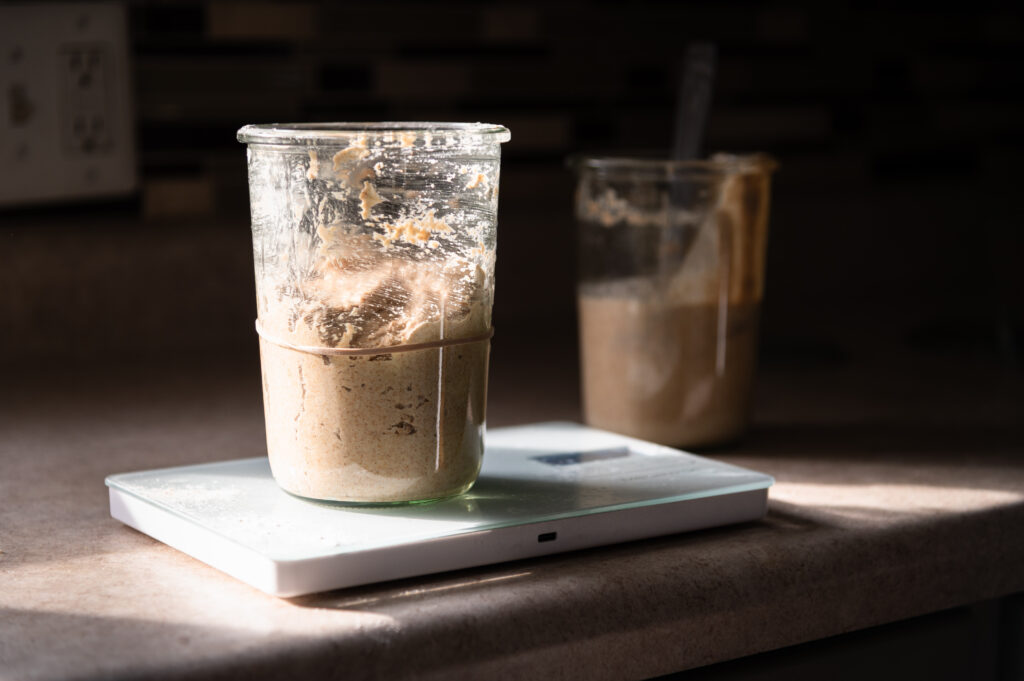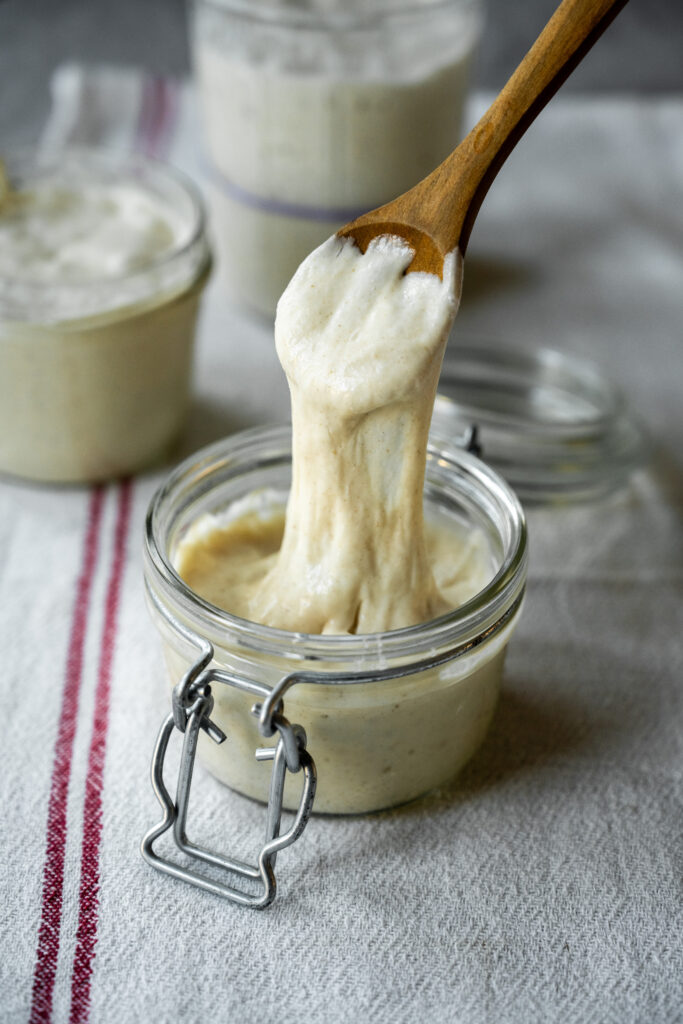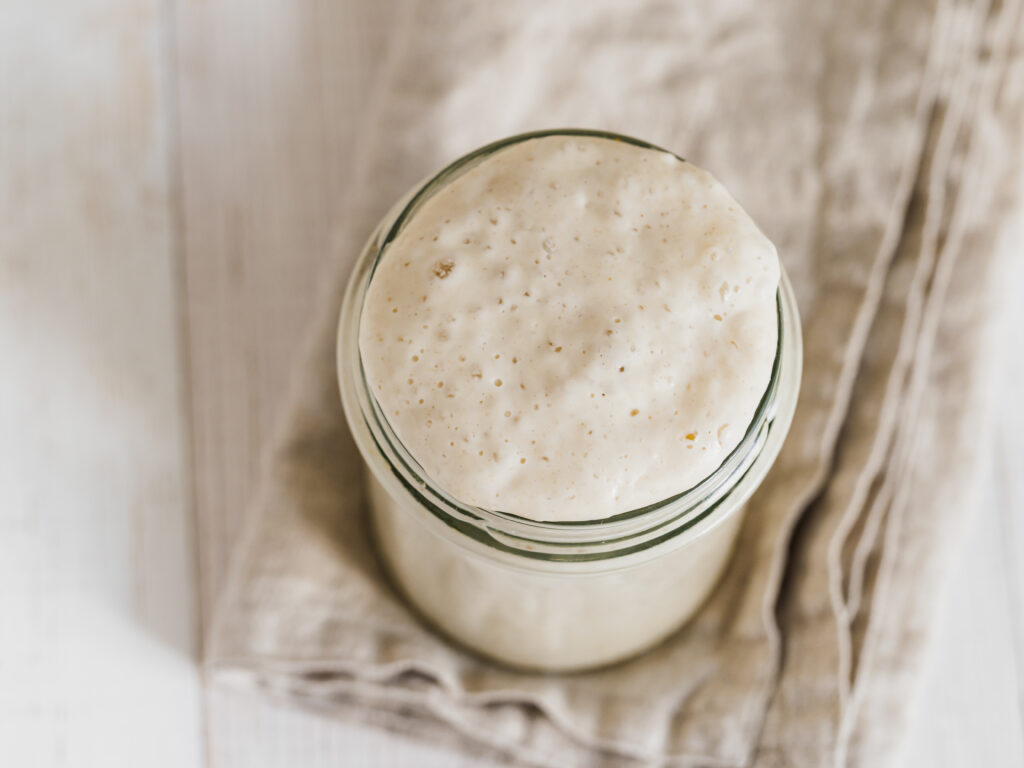
What’s Actually Happening in Your Jar?
Okay, mama—have you ever looked at your sourdough starter bubbling away on the counter and thought… “What even IS this stuff?”
I mean, it’s just flour and water, right? But it grows, it bubbles, it smells different each day… it’s basically alive. And that’s because—spoiler alert—it is.
Sourdough isn’t just baking. It’s wild fermentation, kitchen science, and old-school magic all in one mason jar. 🤍 And once you know what’s actually going on in that starter, everything about the process just makes more sense.
Let’s break it down in a super simple, no-science-degree-needed way—because the more you understand your starter, the more confident you’ll feel baking with it.

What Is a Sourdough Starter, Scientifically Speaking?
At its core, a sourdough starter is a living culture made up of:
- Wild yeast (captured from the flour and air)
- Lactic acid bacteria (similar to what’s in yogurt and kimchi)
- Water + flour (the fuel that feeds it all)
These microbes live together in your jar, and when fed regularly, they create gas, acid, and enzymes that make your bread rise, taste amazing, and last longer.

The Microbes Doing the Work
Wild Yeast
This is the natural yeast that replaces store-bought yeast. It eats the sugars in flour and produces carbon dioxide gas, which makes your dough rise.
Lactic Acid Bacteria (LAB)
These good bacteria break down flour and produce lactic acid and acetic acid—that’s where the tangy flavor comes from! They also help preserve the bread naturally.
Together, yeast and bacteria live in balance. Feed them regularly, and they’ll thrive.
The Role of Time, Temperature, and Feeding
- Time: Fermentation takes time. The longer your dough sits, the more flavor develops.
- Temperature: Warmer = faster fermentation; cooler = slower (but often tastier).
- Feeding: Regular feedings give the microbes new food (flour + water) to stay active and healthy.
Skipping feedings? Things get sluggish, sour, or separated. But the beauty is—they’re super forgiving.

Why It Bubbles, Grows, and Sometimes Smells Weird
- Bubbling: That’s the gas from yeast eating sugar. It means your starter is alive and working!
- Growth: After feeding, the microbes party hard and double the starter’s size.
- Smells: A fresh, active starter smells tangy or yeasty. Too sour or cheesy? Might need a few fresh feedings.
If it ever smells rotten or shows mold? Time to start over.
How This Impacts Your Bread
Here’s where the science gets delicious.
- The gas makes your bread airy and fluffy
- The acids add flavor and help gluten develop
- The enzymes make it easier to digest
- The fermentation time acts like a natural preservative
So when you bake with sourdough, you’re not just making bread… you’re baking with wild, living culture that’s been used for thousands of years.
How cool is that?
Related Sourdough Posts
Did this help you?
We’d love to see! Tag @homesteadwildflower on Instagram! #homesteadwildflower
#sourdoughscience #homesteadkitchen #fromscratchbread #realfoodrealmagic
